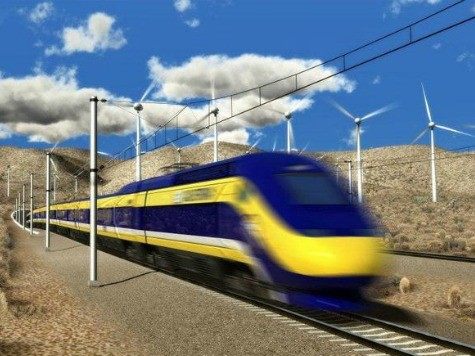The public battle over whether California’s bullet train from Los Angeles to San Francisco will make a profit has pitted California High-Speed Rail Authority officials against opponents of the train, and the nebulous estimates leave the financial future of the system as murky as ever.
The original estimates of $50 per person for riding the train that were offered in ballot arguments ballooned to $105 before settling to the current $86 estimate that the rail authority now offers, according to the Los Angeles Times.
The Times reports that the $86 estimate for a ride from San Francisco to Los Angeles, which would amount to 20 cents per mile, would match some of the lowest prices for high-speed rail in the world, comparing it to Italy’s Milan to Salerno line (25 cents), China’s Beijing and Shanghai line (22 cents), France’s Paris to Lyon line (52 cents), Germany’s Hannover to Wurzburg line (46 cents) and Amtrak’s Acela Washington to Boston line (about 50 cents).
Yet experts agree that there is no way to predict with any certainty what the actual price of the ticket on the California bullet train by the time the train becomes fully operational. State law requires that the train operate free of any taxpayer subsidy. Jeff Morales, Chief Executive Officer of the California High Speed Rail Authority, said that by the time the train is ready in 2028, it won’t take long to make a profit, but Lisa Schweitzer, a USC associate professor in transportation and urban planning, questioned that, telling the Times, “Any time you are trying to project more than five years out, you are just spitballing. So many things can change dramatically in five years.” Joseph Vranich, former president of the national High-Speed Rail Assn., added, “I have not seen a single number that has come out of the California high-speed rail organization that is credible. As a high-speed rail advocate, I am steamed.”
William Grindley, a former World Bank executive, said bluntly, “Can the proposed California bullet train break even? The answer is unequivocally no.” Grindley coauthored a 2012 report, updated in 2014, that asserted that the bullet train would need “a subsidy forever,” anywhere from $123 million to $1 billion or more every year.
Morales responded by citing a study headed by Frank Koppelman, an emeritus professor at Northwestern University, which called the rail authority’s estimates “commendably high quality,” even though one assumption in the report stated that travelers would drive roughly 90 miles from Sacramento to downtown San Francisco, then take a bullet train to the airport.
Rail authorities estimate 18 million and 31 million passengers will ride the train every year, and that by 2030, ticket sales will reach $2 billion annually, around $700 million a year over costs. The Reason Foundation reported in 2013 that the California High-Speed Rail Authority was overestimating ridership by 65 to 77 percent and taxpayers would have to ante up between $124 million to $373 million a year to cover the train’s costs.
The competition from airlines, according to rail authorities, does not carry great significance because only roughly 6% of train riders would have traveled by air. The Times reports that in 2014, around 10.7 million people flew from the five airports in Los Angeles and Orange Counties to the three airports in the Bay area, and added, “Recently, one-way fares between L.A. and San Francisco have been as low as $68, but can exceed $200 for next-day travel.”
What the Times did not report is that some of the routes that it compared to the bullet trains’ simply do not have flights, e.g. Milan to Salerno. As Robert Ditchey, a former airline executive and a co-founder of America West Airlines, pointed out, airlines in California can fly routes that the train will not match, such as Ontario to San Jose, Santa Ana to San Francisco and Burbank to Oakland.
An additional factor was stated by Genevieve Giuliano, director of USC’s Metrans transportation program, who told the Times, “With a family, it’s four train fares versus one car, and taking the train may require a car rental at the other end. I don’t see high-speed rail as competitive in the family market.”

COMMENTS
Please let us know if you're having issues with commenting.